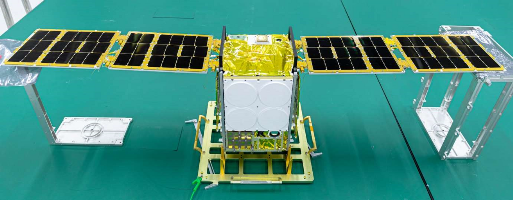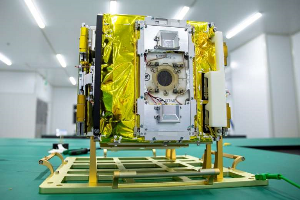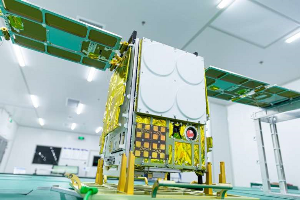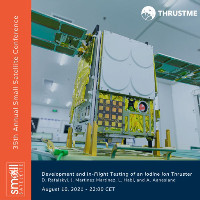| Satellite name | Beihangkongshi 1 (TY 20) |
|---|---|
| Type | CubeSat |
| Units or mass | 12U |
| Status | Reentry 2023-04-03. Was operational (ThrustMe confirmed propulsion results) |
| Launched | 2020-11-06 |
| NORAD ID | 468338 |
| Deployer | Unknown |
| Launcher | Long March 6 (CZ-6) |
| Entity name | Spacety |
| Institution | Company |
| Entity type | Commercial |
| Headquarters | China |
| Manufacturer | AIVT by Spacety |
| Operator | Spacety |
| Partners | TrustMe |
| Oneliner |
First iodine electric propulsion systems that will be tested in space and laser communications module. |
| Description |
First iodine electric propulsion systems that will be tested in space. Spacety’s first 12U cubesat houses a laser communications module and autonomous airplane tracking technology. Spacety created a new bus for the Beihangkongshi-1 cubesat with batteries, a thermal radiator and a solar panel “to support payloads with high power consumption and duty cycle,” Zheng said. Beihangkongshi-1 is designed to demonstrate key technologies for multi-beam and multi-channel Automatic Dependent Surveillance-Broadcast to provide continuous global aircraft tracking, communication and intervention for future air traffic control systems. The BEIHANGKONGSHI-1 satellite includes a ThrustMe NPT30-I2 electric propulsion system which uses iodine propellant. Iodine can be stored as a solid and does not require any complex or costly high-pressure storage tanks like conventional gaseous propellants such as xenon. This also means that the propulsion system can be delivered pre-filled, which greatly simplifies satellite integration and testing. Considering the high production cost of xenon, and the predicted supply problems to meet growing demands from satellite constellations, iodine is seen as an important next-generation propellant to enable sustainability of the space industry. The satellite platform is equipped with batteries of 400 Wh and a solar panel of nearly 100 W to support payloads with high power consumption and duty cycle. It has the capability to accommodate payloads of large range of different power requirement with a patented thermal radiator. The area of radiating surface is controllable according to the satellite thermal control need. BEIHANGKPNGSHI-1 is the first technology demonstration mission in China to demonstrate the technology for automatic airplane tracking. It will validate and demonstrate key technologies for multi-beam and multi-channel ADS-B system. An ADS-B over satellite system has the characteristics of continuous global coverage, dynamic tracking, real-time communication, and precise intervention. It can provide information services such as communication, navigation, and surveillance for a wide range of aviation users, and enhance the capabilities of existing air traffic control systems. This flight demonstration will benefit the development of national airspace and aviation industry in general. |
| Sources | [1] [2] [3] |
| Photo sources | [1] [2] |
| COTS subsystems |
|
| Keywords | Propulsion, Laser transmitter, Hosted Payloads, ADS-B |
Last modified: 2024-05-30




